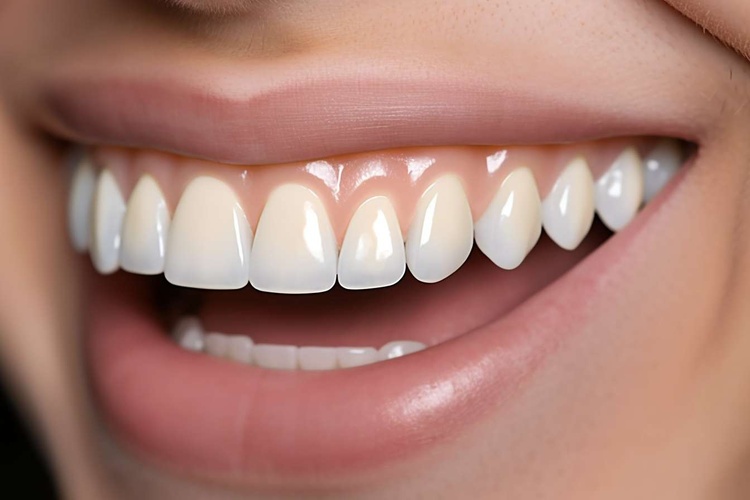Discover the Future of Dental Braces: Advanced Upper Braces for a Confident Smile
Upper dental braces have evolved significantly in recent years, offering patients more comfortable and aesthetically pleasing options than ever before. With advanced materials and innovative designs, modern upper braces provide effective teeth alignment while minimizing the visual impact that traditional braces once had. Understanding these developments can help patients make informed decisions about their orthodontic treatment journey.

Orthodontic treatment has evolved dramatically, with upper dental braces now offering advanced materials, improved comfort, and faster results. Patients seeking to correct alignment issues in their upper teeth have access to a variety of options that cater to different needs, preferences, and financial considerations. This article explores what upper dental braces are, why they often receive focused treatment, the types available, their benefits, and how costs compare across different providers.
What Are Upper Dental Braces?
Upper dental braces are orthodontic devices specifically designed to correct alignment, spacing, and bite issues in the upper arch of teeth. These appliances apply controlled pressure over time to gradually shift teeth into their desired positions. Traditional metal braces, ceramic braces, lingual braces, and clear aligners can all be configured to treat the upper teeth exclusively or in combination with lower teeth treatment. The choice depends on the severity of misalignment, patient preference, and orthodontic recommendations. Upper braces address concerns such as crowding, gaps, overbites, and protruding front teeth, contributing to both functional and aesthetic improvements.
Why Focus on Upper Braces?
Many orthodontic cases require treatment primarily on the upper teeth due to specific alignment or bite problems localized to the upper arch. Focusing treatment on the upper teeth can be more cost-effective and time-efficient when lower teeth are already well-aligned. Upper teeth are also more visible when smiling, making their alignment a priority for patients concerned with aesthetics. Additionally, certain bite issues like overbites or upper crowding may not necessitate lower braces, allowing orthodontists to concentrate efforts where correction is most needed. This targeted approach can reduce overall treatment duration and associated expenses while delivering significant cosmetic and functional benefits.
Types of Upper Dental Braces
Several types of upper dental braces are available, each offering distinct advantages. Traditional metal braces remain popular due to their durability and effectiveness, using stainless steel brackets and wires to move teeth precisely. Ceramic braces provide a more discreet option, with tooth-colored or clear brackets that blend with natural teeth, appealing to adults and teens seeking less noticeable treatment. Lingual braces are placed on the back surfaces of teeth, making them virtually invisible from the front, though they may require an adjustment period for speech and comfort. Clear aligners, such as those offered by various providers, use removable trays to gradually shift teeth, offering flexibility and minimal impact on daily life. Each type has specific applications based on complexity, patient lifestyle, and budget.
Benefits of Modern Upper Braces
Modern upper braces offer numerous benefits beyond straightening teeth. Advances in materials and technology have made braces more comfortable, with smaller brackets, smoother surfaces, and reduced irritation to soft tissues. Treatment times have shortened due to improved wire technology and more precise treatment planning using digital imaging and 3D modeling. Aesthetic options like ceramic and lingual braces allow patients to undergo treatment discreetly, reducing self-consciousness during social and professional interactions. Improved oral hygiene is another advantage, as properly aligned teeth are easier to clean, reducing the risk of cavities and gum disease. Additionally, correcting bite issues can alleviate jaw pain, headaches, and uneven tooth wear, contributing to long-term oral health and overall well-being.
Comparing Upper Braces Costs
The cost of upper dental braces varies based on the type of braces, treatment complexity, geographic location, and provider. Understanding the financial commitment helps patients plan accordingly and explore available options. Below is a comparison of typical cost estimates for different types of upper braces from various providers across the United States.
| Type of Braces | Provider Example | Cost Estimation (Upper Only) |
|---|---|---|
| Traditional Metal Braces | Local Orthodontist | $2,000 - $4,000 |
| Ceramic Braces | Smile Direct Orthodontics | $3,000 - $5,500 |
| Lingual Braces | Advanced Orthodontic Center | $5,000 - $8,000 |
| Clear Aligners | Invisalign | $3,500 - $6,000 |
| Clear Aligners | SmileDirectClub | $1,800 - $2,400 |
Prices, rates, or cost estimates mentioned in this article are based on the latest available information but may change over time. Independent research is advised before making financial decisions.
Cost variations depend on factors such as treatment duration, the need for additional procedures like tooth extractions or attachments, and whether insurance coverage applies. Many orthodontic offices offer payment plans, financing options, or discounts for upfront payments, making treatment more accessible. Patients should consult multiple providers, request detailed treatment plans, and verify insurance benefits to determine the most suitable and affordable option for their needs.
Making an Informed Decision
Choosing the right upper dental braces involves considering multiple factors, including treatment goals, lifestyle, budget, and personal preferences. Consulting with a qualified orthodontist ensures a comprehensive evaluation and personalized treatment plan tailored to individual needs. Patients should ask about expected treatment duration, maintenance requirements, potential discomfort, and long-term outcomes. Exploring financing options and understanding total costs upfront prevents unexpected expenses and supports better financial planning. With the wide range of advanced options available today, achieving a confident, healthy smile through upper dental braces is more attainable than ever, offering lasting benefits that extend well beyond aesthetics.




